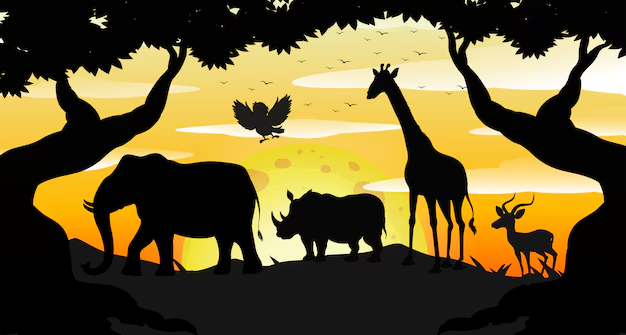In the vast landscape of contemporary art, where boundaries are continuously pushed and traditional forms redefined, Art of Zio emerges as a distinctive force. This concept—or perhaps movement—is not merely about aesthetic appeal; it’s a synthesis of creativity, innovation, and profound expression. Art of Zio transcends conventional artistry, weaving together cultural narratives, modern techniques, and emotional depth to create an experience that resonates on both personal and universal levels.
The Origins of Art of Zio
To understand the Art of Zio, one must delve into its origins. The term “Zio” itself is enigmatic, often sparking curiosity. Some interpret it as a symbolic representation of a creative spirit, while others believe it embodies the fusion of tradition with futuristic ideals. Whether it’s rooted in cultural lore, personal philosophy, or an abstract concept, Art of Zio is characterized by its fluidity—adapting, evolving, and challenging the norms.
Art of Zio likely emerged from a desire to break free from the constraints of traditional art forms. It’s not confined to a single medium or style; instead, it thrives in diversity. Whether it’s digital art, mixed media, sculpture, or immersive installations, Art of Zio embraces every form as a potential canvas. This versatility makes it a dynamic force in the art world, capable of resonating with a broad audience.
Core Principles of Art of Zio
At its heart, Art of Zio is built on several core principles that define its unique character:
1. Innovation Over Imitation
Art of Zio values originality above all. It encourages artists to explore uncharted territories, experiment with new materials, and embrace unconventional methods. The goal is not to replicate what has already been done but to pioneer new forms of expression. This innovative spirit fosters a sense of excitement and unpredictability, making each piece a fresh exploration.
2. Emotional Resonance
While technical skill is important, Art of Zio places a stronger emphasis on emotional impact. Every artwork is designed to evoke feelings—whether it’s awe, curiosity, nostalgia, or even discomfort. This emotional depth connects the viewer to the artwork on a personal level, making the experience more immersive and meaningful.
3. Cultural Fusion
Art of Zio often draws from a rich tapestry of cultural influences. It celebrates diversity by blending elements from different traditions, histories, and philosophies. This fusion creates artworks that are both globally relevant and deeply personal, reflecting the interconnected nature of our modern world.
4. Interdisciplinary Approach
One of the defining features of Art of Zio is its interdisciplinary nature. It blurs the lines between art, technology, science, and philosophy. This approach not only broadens the scope of what art can be but also challenges the viewer to engage with it on multiple levels. For instance, an Art of Zio installation might incorporate augmented reality, interactive elements, or even soundscapes to create a multisensory experience.
The Techniques Behind Art of Zio
The techniques used in Art of Zio are as diverse as its principles. Artists often combine traditional methods with cutting-edge technology to create hybrid forms of art. Here are some common techniques that exemplify the Art of Zio:
- Mixed Media: Combining paint, digital elements, photography, and found objects to create layered, textured compositions.
- Digital Art: Utilizing software to craft intricate, often surreal visuals that challenge the boundaries of physical art.
- Immersive Installations: Creating environments that surround the viewer, making them an active participant in the artwork.
- Experimental Sculpture: Using unconventional materials such as recycled objects, light, or even organic matter to construct thought-provoking pieces.
These techniques not only reflect the versatility of Art of Zio but also its commitment to pushing artistic boundaries.
Notable Examples of Art of Zio
While the term Art of Zio might be relatively new or niche, its influence can be seen in various contemporary art movements and works. Artists who embrace the ethos of Art of Zio often produce pieces that defy categorization. For example:
- Interactive Digital Installations: Like those by teamLab, where art responds to the viewer’s presence and movements, creating an evolving experience.
- Surreal Mixed Media Works: Similar to the style of Banksy, where traditional graffiti merges with political commentary and multimedia elements.
- Futuristic Sculptures: Reminiscent of Anish Kapoor, who uses reflective surfaces and abstract forms to explore concepts of space and perception.
While these artists may not explicitly identify with the Art of Zio label, their works embody the spirit of innovation, emotional depth, and cultural fusion that defines the movement.
The Impact of Art of Zio on Modern Culture
Art of Zio is more than an artistic style—it’s a cultural phenomenon. Its impact extends beyond galleries and museums, influencing design, fashion, architecture, and even digital media. In a world increasingly dominated by technology, Art of Zio serves as a reminder of the human capacity for creativity and emotional connection.
Moreover, Art of Zio encourages a more inclusive art world. Its emphasis on diversity, interdisciplinary collaboration, and emotional resonance makes it accessible to a broader audience. People from different backgrounds can find meaning and inspiration in Art of Zio, fostering a global community of artists and art enthusiasts.
Conclusion
In the ever-evolving landscape of contemporary art, Art of Zio stands out as a beacon of creativity, innovation, and emotional depth. It challenges artists to think beyond traditional boundaries, experiment fearlessly, and connect with audiences on a profound level. Whether through digital installations, mixed media, or immersive experiences, Art of Zio continues to redefine what art can be in the modern era.
As we look to the future, Art of Zio reminds us that art is not just about what we see—it’s about what we feel, imagine, and create. It’s a testament to the boundless possibilities of human expression, inviting us all to be part of its vibrant, ever-evolving story.










